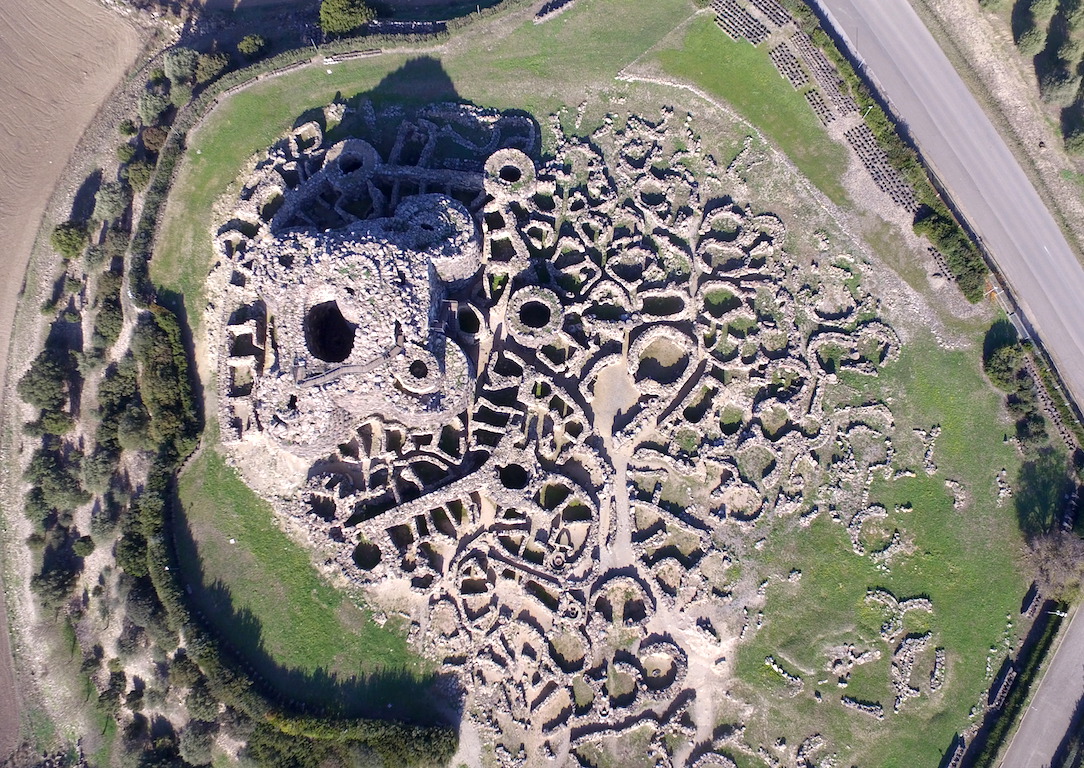“Su Nuraxi” Archaeological site in Barumini
Barumini
Su Nuraxi archaeological site was brought to light in the fifties by archaeologist Giovanni Lilliu and was declared a World Heritage Site in 1997.
It is one of the most important archaeological complexes in Sardinia. Located at the foot of Giara di Gesturi, it played a fundamental role in the strategic system created by other nuraghes of the surrounding area.
The History

The site of Su Nuraxi proves that the Nuragic civilization has existed in Sardinia for almost 1000 years, from 1500 until 500 B.C., and is represented by its most distinctive edifice, known as the nuraghe. In the area of Barumini there are roughly thirty nuraghe. Su Nuraxi, with its numerous towers, is the most representative among complex nuraghes.
The site is characterized by a cultural stratification dating back more than 2,000 years. Its creation shows different building phases which can be identified through the structures and materials used. The complex was raised using basalt, a very hard volcanic stone found in the nearby Giara upland.
The major tower, also known as mastio, was built during the Middle Bronze Age (1500-1350 B.C.). It is a truncated central tower surrounded by a bulwark made of four towers built on two floors and linked by stone curtain walls with balconies.
In the Recent Bronze Age (1300-1100 B.C.), due to structural failures, the fortification was reinforced and mighty walls, which closed the embrasures and the main entrance, were constructed. Consequently, a new entrance was created and a second outer wall of seven linked towers was built to reinforce the defensive system.
The village of two hundred huts made an appearance in the Final Bronze Age (1150-700 B.C.). Most of the dwellings made of only one room and covered with wooden conical roofs are still visible today around the nuraghe.
During the Iron Age (10th-8th century B.C.), when the Nuragic civilization was approaching its end, the village grew and canalization and drainage systems were introduced.
Later on, Su Nuraxi was nearly destroyed and a new village was built on its ruins around the 7th century B.C.
During the 5th century the Carthaginians occupied the area but did not alter the organization and lifestyle of its inhabitants who continued to live in the village until the 3rd century A.D.
Address
Viale Su Nuraxi
09021 Barumini
Properties
Ente MiBACT
Tipology
Architettura-civile